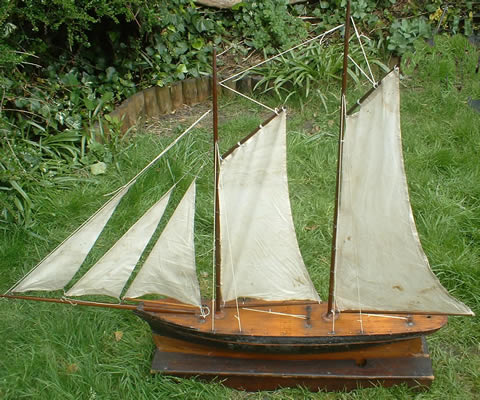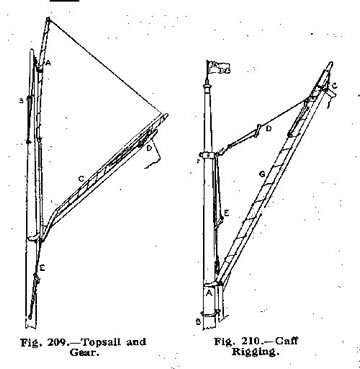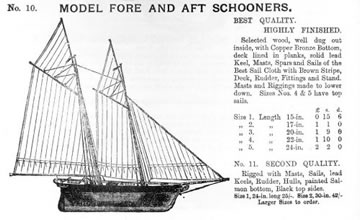Here is our new ebay acquisition,
"Lily"...
Seems all there and all original bar the jib boom... We've put her together
as best we can, stitched the mainsails to the booms, gaffs and mast hoops,
not too sure about how to rig the gaffs at the very top, all advice welcome!
She features lead keel, iron "bumper" below waterline at bows, hollow
carved one piece hull, with bung hole at stern to let water out(!) with another
piece of wood between main (upper) hull and keel. The original shrouds/stays/halyards
are twisted copper wire, but have been exchanged by us for chalk line. Sails
are pretty fragile, but probably seaworthy for a bit.
Plan is to leave her as she is with the sole addition of a couple of coats
of varnish.
Seller's description: "What can I say about this item apart from it was
found in my Grandma's Attic, no one knows anything about it apart from its
been up there for at least 45 years, The ship itself is 33" long and
has been made to actually sail. As you can see by the picture it needs some
love and attention and to be honest I would'nt know how to restore it, Im
sorry but I can't say anymore about it as I just Don't know, It does look
old and it comes with a purpose built stand. "
How old d'you think she might be? Suspect she's not built to any class rules,
but am no expert! What say you?


A nice example of a commercial model from the late 19th century.
It matches closely the schooner in the illustration, which comes from a Stevens's
Model Dockyard catalogue, though they don't appear to offer one as big as
this, except to order. and theirs seems to have some scalish deck fittings
that are not on Lily. The catalogue is dated 1919, but the style of model
was probably offered for many years before and after that. Stevens's were
selling models of clearly 19th century design as late as the early years of
WW II, shortly before they went out of business.
The 'bumper' on the bow waterline may be the remnants of an eye fitting for
a bobstay. The sails on the model at present are almost certainly not the
originals. They look far too good to be the age that this must be and they
look home made. As you suggest good enough to get the boat on the water to
see whether the rig is balanced, but ultimately for replacement. Incidentally
the rig in the catalogue illustration doesn't look to be well balanced and
you may need to reduce the overhang of the main boom to get the boat to sail.
Notice also that the model in the catalogue has a loose footed foresail ands
jib and that the foresail appears to slightly overlap the main mast. This
is not uncommon on full size schooners and I have seen models so rigged, but
it's clearly a pain in the ass when you're actually sailing. How does the
rudder work on Lily? Is it just a friction fit?
Halyards for the gaff are shown in the attached illustration from Hobbs' Model
Sailing Boats of 1923. This is aimed at a serious racing model audience, but
the principles is the same for all gaff rigs.


| 